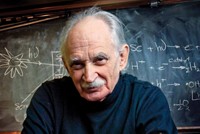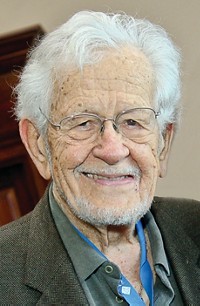Advertisement
Grab your lab coat. Let's get started
Welcome!
Welcome!
Create an account below to get 6 C&EN articles per month, receive newsletters and more - all free.
It seems this is your first time logging in online. Please enter the following information to continue.
As an ACS member you automatically get access to this site. All we need is few more details to create your reading experience.
Not you? Sign in with a different account.
Not you? Sign in with a different account.
ERROR 1
ERROR 1
ERROR 2
ERROR 2
ERROR 2
ERROR 2
ERROR 2
Password and Confirm password must match.
If you have an ACS member number, please enter it here so we can link this account to your membership. (optional)
ERROR 2
ACS values your privacy. By submitting your information, you are gaining access to C&EN and subscribing to our weekly newsletter. We use the information you provide to make your reading experience better, and we will never sell your data to third party members.
ACS News
Electrochemist Allen J. Bard dies at 90
Father of Modern Electrochemistry leaves behind a legacy of research and mentorship
by Fionna Samuels
February 19, 2024

Allen J. Bard, a professor emeritus at the University of Texas at Austin, died Feb. 11 at the age of 90.
Bard grew up in New York City in a family that fostered his interested in science. After receiving his bachelor’s in chemistry from the City College of New York in 1955, Bard entered graduate school at Harvard University. There, Bard “took to electrochemistry like a fish to water,” he told the Electrochemical Society in 2015. He earned a doctorate in chemistry 3 years later and immediately joined the faculty at UT Austin, where he remained for 63 years.
Bard established himself as a leader in electrochemistry during his career. His last graduate student, Jeffrey Dick, appreciated Bard’s ability to relay the history of an entire discipline until modern times. “He never called it the Bard period of electrochemistry,” Dick says. “But all of us sitting in the audience knew that electrochemistry wouldn’t be nearly what it is today without his contributions.”
Bard’s “bulldog”persistence in research was one thing that set him apart from others, says University of Utah distinguished professor Henry White, who received his PhD in Bard’s lab 41 years ago. After many years of work developing the fundamentals of electrochemiluminescence—luminescence induced by a redox reaction—Bard’s group discovered a way to generate it in aqueous solutions. The methods the researchers developed are still used today in clinical diagnostic assays. “That is one of the great commercial successes of electrochemistry,” White says.
Bard is also well known for his photoelectrochemistry work and developing the first scanning electrochemical microscope. He was inducted into the US National Academy of Sciences in 1982 and started a 20-year tenure as the editor in chief of the Journal of the American Chemical Society the same year. Bard was further recognized with a plethora of prestigious awards, including the Priestley Medal and Wolf Prize in Chemistry, in subsequent years.
Bard’s legacy stretches beyond his exploration of fundamental science to the next generation of electrochemists. More than 90 PhD students, 200 postdoctoral fellows, and many master’s students and research scientists worked in his laboratory. “Al was just an absolutely marvelous teacher and scientist,” says Larry Faulkner, president emeritus of UT Austin and one Bard’s earliest graduate students and lifelong friends. “It’s very rare to find someone with that scientific ability and drive and that humanity.”




Join the conversation
Contact the reporter
Submit a Letter to the Editor for publication
Engage with us on Twitter